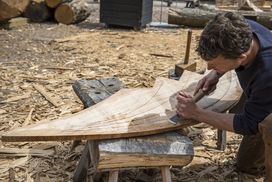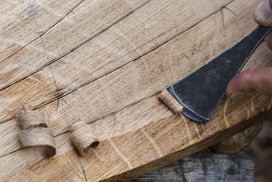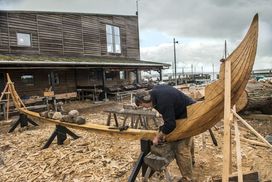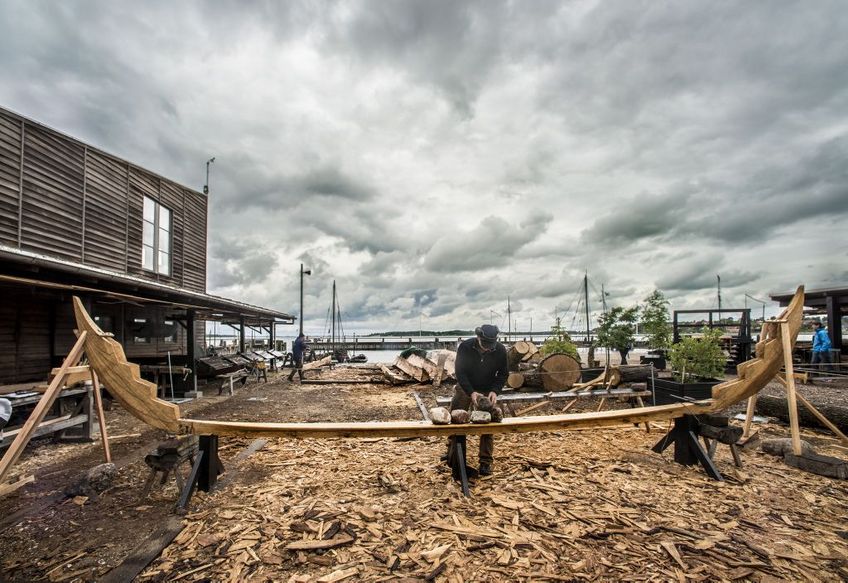
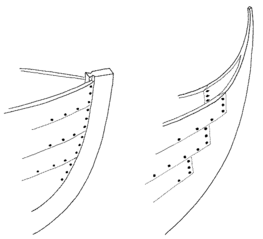
Stem and keel
The boat's backbone
While the Middle Ages would see a number of major advances in maritime technology, at the time the Gislinge Boat was built in 1130, Scandinavian boatbuilding was still very much rooted in the Viking Age tradition. The most iconic element of Viking Age ships is probably the stems: the image of the streamlined hull, tapering off into narrow and elegant fore and after stems seems to underpin the speed and sailing capabilities of these ships, which made the Vikings the rulers of the seas in the centuries before.
Stepped-stems are also where we see the clearest expression of Viking Age boatbuilding aesthetic. Made from a single piece of timber, the stems are carved in such a way as to create the illusion that the strakes all run seamlessly into the stem-top. This practice is what creates the sleek lines that we typically associate with Viking ships and its presence on a humble working boat like the Gislinge Boat, underlines how central an element of the boatbuilding tradition this was. Together with the t-shaped keel, the stems form the backbone of the boat and are the first elements that are produced when building a clinker-built boat.
The stem
The keel and stem are most often made from oak with the axe as the most important tool. To make the stems, the oak is cleaved into smaller sections.
The outer shape of the stem is chopped out and the characteristic 'steps' cut into the backside. The lines along the sides of the stem - where the planks 'merge' into the stem - are marked out and the initial carving is done with a chisel. The stem is then hollowed out to the correct thickness, varying in thickness from the stem-top to the join where the boards run into the stem.
The t-shaped keel
The long keel is t-shaped and forms the spine of the boat. The keel is made from an oak trunk, which isgradually cut down to size: first it is roughly cut into a square profile and from there, the more detailed work in shaping the keel begins. Again, an axe is used as the primary tool, although the boatbuilders also use chisels when marking specific depths for the cuts and for the finer shaping of the curved ‘wings’ that form the keel’s outer edges. The keel was finished some time before the stems, so it was given liberal coatings of linseed oil and stored in the shade to prevent the oak from cracking.
The keel and stems are joined using scarf joints which are fastened with three iron rivets each. Tarred wool is placed between the opposing faces of the scarf as caulking. This helps to make the joint watertight.

Explore the boat’s hull. Click on the grey areas to read more about the hull’s construction.
